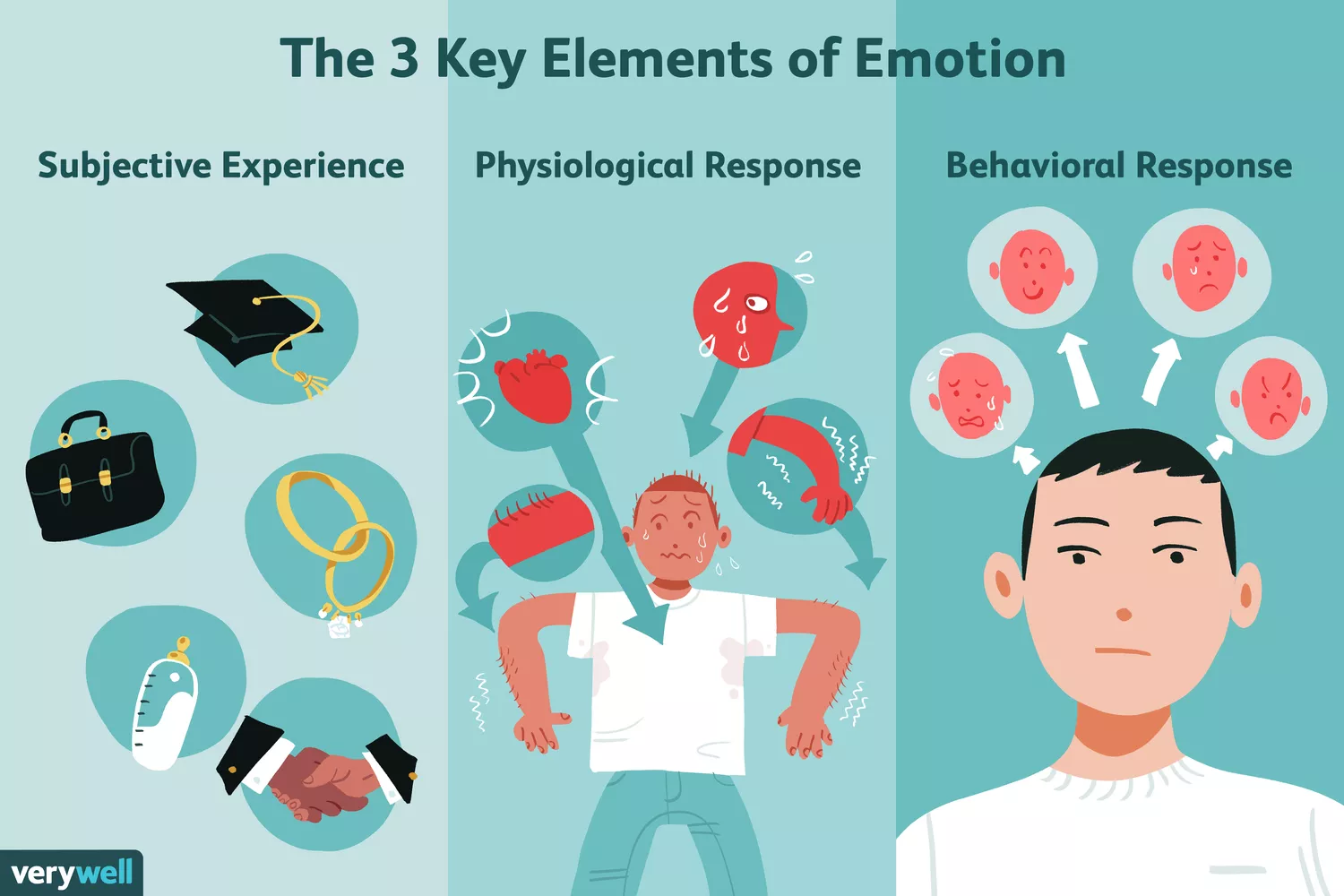The Complete Guide to Types of Emotional Responses
Feeling like your reactions take over before you can think? One comment at work, one unread message, or one unexpected bill and suddenly you're snapping, shutting down, or spiraling.
Understanding the types of emotional responses is not just psychology jargon. It's a practical skill that helps you decode what you feel, why you react the way you do, and how to respond with intention instead of regret.
Table of Contents
- Why Emotional Responses Matter in Daily Life
- The Science: What Is an Emotion, Really?
- Why Willpower-Only Strategies Fail
- Core Types of Emotional Responses (With Examples)
- Root Causes: What Shapes Your Emotional Style
- A Practical Framework to Reset Your Responses
- 30-Day Implementation Timeline
- Troubleshooting & FAQ
Why Emotional Responses Matter in Daily Life
In under a second, your brain decides whether to fight, freeze, please, or shut down. These split-second reactions drive how you speak to your partner, handle conflict at work, parent your kids, eat, spend, and perform.
When you don't understand your emotional patterns, you spend your life reacting instead of leading it.
Key problems many people face:
- Overreacting to small triggers, then feeling shame or confusion.
- Emotionally numbing out (scrolling, snacking, binging content) instead of dealing.
- Relational tension because different types emotional responses keep clashing.
- Chronic stress symptoms: poor sleep, headaches, fatigue, digestive issues.
Modern research links poorly regulated emotional responses with increased inflammation, anxiety-related disorders, and higher risk of heart disease (Harvard, 2024). The good news: emotional patterns are trainable.
The Science: What Is an Emotion, Really?
Featured snippet (definition – 45 words): Emotions are fast, coordinated responses involving your thoughts, body, and behavior in reaction to a trigger. They include three parts: how you interpret an event, how your body physically reacts, and how you express or act on it. They are brief, powerful, and highly adaptive.
At its core, every emotional response includes three components:
- Subjective experience – your personal interpretation: "This is unsafe," "This is disrespectful," "This is exciting."
- Physiological changes – heart rate, muscle tension, hormones, breath shifts.
- Behavioral expression – your visible response: words, tone, face, posture, or withdrawal.
Decades of work by Ekman, Plutchik, and contemporary Stanford researchers show that while certain facial expressions are universal, how we respond is shaped by learning, culture, and context. In 2025, emotional skills are considered a core component of performance, leadership, and mental well-being.
Why Willpower-Only Strategies Fail
Most people try to "fix" their reactions with advice like:
- "Just calm down."
- "Think positive."
- "Stop being so sensitive."
These approaches fail because they:
- Ignore biology – your nervous system reacts before logic.
- Skip awareness – you can't regulate what you don't recognize.
- Shame normal emotions – labeling anger, sadness, or fear as "bad" intensifies them.
Instead of forcing yourself not to feel, you need a system that works with your brain and body, not against them.
Core Types of Emotional Responses (With Examples)
Featured snippet (types – 47 words):
Common types of emotional responses include primary emotions (like joy or fear), secondary emotions (such as guilt about feeling angry), and patterned responses like fight, flight, freeze, and fawn.
Understanding which type is activated helps you choose healthier, more intentional reactions.
1. Primary Emotions
Primary emotions are fast, instinctive reactions that show up across cultures.
They are your system's first draft.
Widely recognized primary emotions include:
- Happiness – Warmth, ease, connection; expressed through smiling, openness, generosity.
- Sadness – Heaviness, loss, low energy; expressed through withdrawal, tears, quiet.
- Fear – Alertness, tension, urge to escape; prepares you for protection.
- Anger – Heat, activation, desire to correct injustice or protect boundaries.
- Disgust – Rejection of what feels contaminated—physical or moral.
- Surprise – Sudden shift in attention; can be pleasant or threatening.
These emotions are not the problem.
The problem is when we suppress, deny, or act them out in ways that damage our lives.
2. Secondary Emotions
Secondary emotions are emotional reactions to your primary emotions.
They often appear more complex and last longer.
Examples:
- Feeling shame because you felt angry at a friend.
- Feeling guilt for experiencing relief after leaving a stressful job.
- Feeling resentment built on unspoken hurt.
Secondary emotions are shaped by beliefs: "I shouldn't feel this," "Good parents don't get frustrated," etc.
Working with them means challenging these beliefs, not erasing the original emotion.
3. Fight, Flight, Freeze, and Fawn Patterns
These are nervous system-based types emotional responses to perceived threat or overwhelm.
They show up in boardrooms, group chats, and relationships—not just life-or-death situations.
- Fight – Arguing, criticizing, controlling, defensiveness.
- Flight – Avoiding hard talks, staying busy, overworking, ghosting.
- Freeze – Going blank, feeling stuck, indecision, shutdown.
- Fawn – People-pleasing, over-apologizing, self-betrayal to keep peace.
Recognizing your default pattern gives you leverage to change it.
4. Constructive vs. Reactive Responses
We can group emotional responses into two practical categories:
- Reactive responses: Impulsive, driven by survival mode. Example: firing off a harsh email at midnight.
- Constructive responses: Paused, processed, aligned with values. Example: naming your frustration and requesting a boundary.
Your goal isn't to feel less.
Your goal is to shorten the distance between emotion and intentional action.
5. Cultural & Learned Responses
Culture, upbringing, and environment deeply shape the types emotional responses you see as acceptable.
New, everyday examples:
- A high performer taught to "never show weakness" laughs off exhaustion until burnout hits.
- A child raised around shouting learns to freeze at any raised voice, even in calm debates.
- A manager from a harmony-focused culture avoids direct feedback, creating confusion for their team.
Understanding this context reduces self-blame and opens space for change.
Root Causes: What Shapes Your Emotional Style
Several factors influence how and why you respond the way you do:
Neurobiology
- Your amygdala scans for threat within milliseconds.
- Chronic stress sensitizes this system, making neutral events feel risky.
Past Experience
- Repeated criticism, chaos, or unpredictability teaches your brain to overreact or shut down.
Beliefs & Narratives
- "If I'm not perfect, I'm unlovable." → panic after minor mistakes.
- "Conflict means abandonment." → fawn or freeze.
Environment & Culture
- Some cultures reward emotional restraint; others reward visible passion.
- Social media amplifies comparison, outrage, and urgency, keeping your nervous system activated.
Stanford researchers emphasize that emotional patterns are learned predictions: your brain anticipates what's coming based on what came before.
Change the pattern, and over time your responses recalibrate.
A Practical Framework to Reset Your Responses
Use this 5-step framework to move from automatic reaction to intentional response.
It is simple enough for busy days, powerful enough for long-term change.
Step 1: Name It Accurately
Labeling emotions reduces intensity and increases clarity.
- Use specific words: "irritated," "disappointed," "overlooked," "anxious," "hopeful."
- Distinguish: "I'm feeling rejected" vs. "They are rejecting me" (one is emotion, one is story).
If you can name it, you can navigate it.
Step 2: Notice the Body Signal
Connect emotion to physiology.
Ask:
- Where do I feel this? (Chest, jaw, stomach, shoulders?)
- Is my breath shallow or tight?
- Am I speeding up, shutting down, or tensing?
This shifts you from autopilot to awareness in seconds.
Step 3: Create a Micro-Pause
Before replying, posting, or reacting:
- Take 3 slow breaths, exhale longer than you inhale.
- If possible, take a brief walk or change posture.
- Use a phrase: "I can respond in a moment."
This interrupts fight/flight/freeze/fawn and re-engages your thinking brain.
Step 4: Choose an Aligned Response
Ask one focusing question:
"What response aligns with the kind of person I want to be in this situation?"
Possible aligned actions:
- Set a boundary calmly.
- Ask a clarifying question instead of assuming.
- Express hurt without attacking.
- Delay decisions when highly activated.
Step 5: Review the Pattern (Daily or Weekly)
Once a day, reflect for 3–5 minutes:
- "Where did I react?"
- "Where did I respond intentionally?"
- "What triggered me? What helped?"
Over time, this builds emotional literacy and resilience, not perfection.
30-Day Implementation Timeline
Use this as a practical roadmap.
Days 1–7: Awareness Only
Focus: Notice without judgment.
- Track 3 emotional spikes per day.
- Write: trigger, emotion, body sensation, behavior.
- No pressure to "fix"—just observe.
Days 8–15: Add the Pause
Focus: Insert space.
- Practice the 3-breath pause before difficult emails, messages, or talks.
- Use a grounding habit: hand on chest, stretch, short walk.
- Start using more precise emotion words.
Days 16–23: Align Behavior
Focus: Choose constructive responses.
- For one key trigger (e.g., criticism, interruptions), pre-plan your ideal response.
- Practice: "I feel X when Y happens. I need Z."
- Notice when you shift from fight/flight/freeze/fawn to calm assertion.
Days 24–30: Integrate & Personalize
Focus: Turn this into your default system.
- Identify your top 3 personal triggers.
- Choose 2 go-to regulation tools (breathing, journaling, movement, time-out phrase).
- Share your new approach with someone close for accountability.
By the end of 30 days, most people report:
- Fewer emotional outbursts.
- Less rumination after conflicts.
- Clearer boundaries and communication.
Troubleshooting & FAQ
Why do I still overreact even though I "know better"?
Knowledge doesn't override a sensitized nervous system.
If you've lived with chronic stress, trauma, or constant pressure, your system is primed to detect threat.
Practice nervous system regulation (breathing, movement, rest) consistently; change is physiological, not just intellectual.
Are some emotions actually "negative"?
Emotions like anger, fear, envy, or sadness feel uncomfortable but serve important functions: signaling risk, injustice, need, or desire.
They become harmful when suppressed or acted out destructively.
Aim for informed expression, not elimination.
How do emotions, feelings, and moods differ?
- Emotions: Fast, event-triggered responses (seconds–minutes).
- Feelings: Your conscious interpretation of those emotions ("I feel ignored").
- Moods: Longer-lasting emotional climates without a clear cause.
Clarifying this helps you avoid making permanent decisions based on temporary states.
What if I shut down instead of blowing up?
Freeze or fawn responses are just as valid as fight/flight.
If you go blank, comply, or disconnect:
- Give yourself more time before responding.
- Practice writing what you wish you'd said.
- Gradually voice small preferences to rebuild safety around expressing yourself.
When should I seek professional support?
Consider talking to a mental health professional if:
- Your reactions feel out of control or out of proportion.
- You experience persistent low mood, numbness, or hopelessness.
- Relationships, work, or health are suffering.
Expert guidance can help you unpack deeper patterns and apply these tools more effectively.
By learning the types emotional responses you default to and practicing a deliberate framework, you move from reactive living to intentional leadership of your own life.
This is not about suppressing emotion; it's about using it as reliable, intelligent data.



